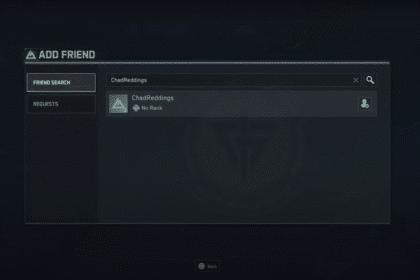When starting a new game in Stardew Valley, you can actually choose which farms you want to start with. These are farms that you will be taking care of for the rest of the game, and it also has several quirks and changes that differentiates them from other farms. But which farm is the best for you? In this guide, we will be showing you the different kinds of farms you can choose and they are good for. By the end, you should be able to make a decision on what farm you are starting with.
Stardew Valley – How To Pick The Best Farm Layout in Stardew Valley
Standard Farm

This is the Standard Farm, which is the farm you have seen from the very beginning when Stardew Valley first released. It’s a basic map, and it’s mostly just for farming crops and having animals around. There are also bodies of water around for fishing, but the ideal spot is the pond at the bottom of the map.
There are a total of 3427 tillable tiles on this map, with 235 being non-tillable, but you are able to build on those tiles. The biggest contiguous rectangular area is 63 x 31 (or 1953) tiles.
Riverlands Farm

If you are looking for a more aquatic adventure, you should consider doing the Riverlands Farm. This farm, since it is surrounded by water, is really good for fishing. However, with how little the land is in the area, farming takes a significant toll. You can still place a couple of farms, but it’s not the same as having a Standard Farm layout. In fact, the number of tillable tiles on this map is only 1578 (516 being non-tillable but buildable tiles), making it a huge downgrade from the Standard Farm.
Forest Farm

If you want to live the life of a lumberjack, then the Forest Farm might be for you. The border around the farm is made of trees and foliage, much like the Secret Woods. You can also find a lot of bushes in this map, including berry bushes. The great thing about this map is that the western clearings can spawn 8 renewable Large Stumps (Hardwood), seasonal forage items, and unique Weeds that drops Mixed Seeds. The possible forage items can be:
- Fall: Chanterelle, Common Mushroom, Purple Mushroom, and Red Mushroom
- Spring: Dandelion, Leek, Morel, and Wild Horseradish
- Summer: Common Mushroom, Grape, Spice Berry, and Sweet Pea
There are also some ponds to fish in this area, but with how the area is already full of grass, farming is decreased. It’s still not as bad as the Riverland Farm, though.
Hilltop Farm

The Hilltop Farm is a lot of high and low areas, but the major difference here is the number of Stones, Ore nodes, and Geode nodes spawning in the area. Depending on your Mining level, there can be a lot of them. If you clear the quarry, it usually comes back after 7 – 13 items on every 4th day, which is actually the optimal day to clear the quarry.
The mining area can sometimes be blocked by a Large Stump, Large Log, or a Boulder, making it impossible to continue unless you have the right tool. There are also a lot of cliffs and here, as well as the large stream for fishing, but that decreases the ability to farm here. There are also a total of 1648 tillable tiles here, but only 930 are non-tillable but buildable tiles.
Wilderness Farm

The Wilderness farm has some of the largest farming land in the game, with some decent fishing spots too. The catch here is that since you are living in the wild, monsters will spawn here at night. That’s right, it’s a regular Minecraft map. Aside from the monsters spawning, there’s not really much difference here.
The monsters scale with the players Combat level as well, so you don’t have to worry about fighting powerful monsters. However, you still have to be careful when going out at night, as you can get attacked from every corner. The area also has 2131 tillable tiles, with only 444 non-tillable but buildable tiles.
Four Corners Farm

If you plan on playing with a bunch of your friends, then the Four Corners map is the perfect map to start in. This map is split into four areas, with the house being in the northeast part of the map. Each map has their own distinctions that is reminiscent of the previous maps:
- Top right is the Standard Farm. Here, you can have a lot more farming space.
- Top left is the Forest Farm. There’s a small grassy area with a Large Stump here, as well as weeds that can transform into unique ones that will drop mixed seeds.
- Bottom Left does not have a specific farm it is distinct to. It has a pond though, and players have a 50% chance to catch forest pond fish and such.
- Bottom right is the Hilltop Farm. This area has a small quarry that spawns Rocks, Ore, and Geode nodes (depending on your Mining level).
The map does have some cliffs that separates the four quadrants, which does affect the farming space of the area. But it has a total number of 2952 tillable tiles.
Beach Farm

This map was recently added in the new 1.5 update, and it’s called the Beach Farm. This map is great for foraging and fishing, and it also has a huge open space. You can even sometimes get supply crates that wash up on shore. However, the major downside of the Beach Farm is that Sprinklers do not work here, meaning you will have to manually water your farm.
The map is mostly for veterans of the game, as it can be quite difficult for newcomers who are just starting. The map has a total number of 2700 tiles here, with 1928 non-tillable but buildable tiles.
Now that you know the farm layouts in the game, which one do you think is best for you? Personally, the best place to start is the Standard Farm. It has the largest farming area, and it is a perfect place for starters.













